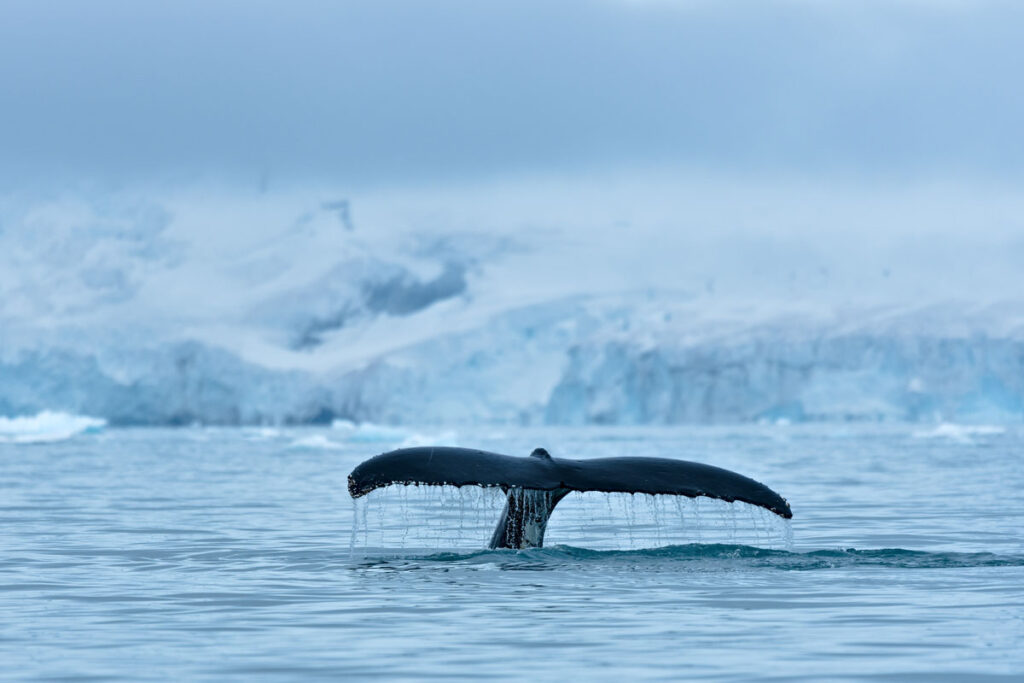Whaling and climate change: the double whammy for carbon sequestration
A study carried out by the MARBEC marine biology laboratory, in collaboration with American and Canadian researchers, provides for the first time an estimate of the dynamics of carbon sequestration on the ocean floor via whale carcasses over a two-century period (1890-2100), showing how whaling and climate change are drastically weakening this natural carbon pump. This sequestration deficit could amount to more than 45 megatons by 2100. This work, carried out by Anaëlle Durfort, doctoral student at the University of Montpellier, was published in the scientific journal Proceedings B on November 2.

Natural carbon pump
Whales, these massive, emblematic animals, play a vital role in marine ecosystems: sequestering carbon in the ocean. When a whale dies, its carcass sinks to the depths, taking with it all the carbon contained in its tissues, trapping it for hundreds or even thousands of years. In the Southern Ocean, whales have been decimated by fishing and are now threatened by climate change, jeopardizing this natural carbon pump. For the first time, this study provides an estimate of the dynamics of carbon sequestration by 5 Southern Ocean whale species from 1890 to 2100.
Double punishment
In the 19th century, the natural deaths of these five whale species sequestered 0.4 mega tonnes of carbon each year. In the 20th century, the growth of the whaling industry, enabled by technological advances, led to the over-exploitation of these populations, bringing some species to the brink of extinction. Right and blue whales were reduced to less than 1% of their historical abundance. As a result, by 1972, whales in the Southern Ocean were sequestering just 0.06 megatons of carbon per year - almost 7 times less than in the past. The study estimates that by 2022, whale overexploitation had prevented the sequestration of 26.8 megatons of carbon. This sequestration deficit could rise to 45.2 mega tonnes by 2100.
Commercial whaling was officially banned by an international moratorium in 1986. But these animals are still under threat, particularly from climate change, which is having a particularly severe impact on polar waters. The recovery of whale populations, already slow due to their long life cycle, is therefore in jeopardy. The model proposed by the study predicts a carbon sequestration of 0.17 megatons per year in 2100 under the current climate change scenario, which is less than half its historical value. Thus, past exploitation and current anthropogenic threats combine to alter the ocean's capacity to sequester carbon.
Beyond tons of carbon
The repercussions of the loss of whales in the Southern Ocean go far beyond the weakening of this oceanic carbon pump. Whales interact with many other organisms, and in fact provide numerous ecological services to marine ecosystems. As whale carcasses sink to the bottom, they not only sequester carbon, but also provide a vital food source for the organisms that live there. Throughout their lives, whales also play a central role as nutrient recyclers, fertilizing their entire environment. In the Southern Ocean, where iron is an essential but limiting nutrient for primary production, whales produce iron-rich feces that enable phytoplankton - microscopic algae - to thrive. The fertilization of this first link in the food chain then benefits the krill... which will in turn be consumed by the whales or will also sequester carbon at the bottom of the ocean in a virtuous circle for nature and the climate.
Preserving whales and their functions?
In addition to banning commercial whaling, other actions can be taken to preserve whales and their associated carbon sinks. For example, preserving krill populations by limiting fishing, or measures to reduce ship strikes can help whale populations recover. However, the main challenge lies in mitigating climate change, which remains the most serious threat to all living organisms in the oceans, with Antarctica certainly the hardest hit.
Practical information:
Publication date: November 2, 2022
The scientific journal
More about MARBEC